TOP 10 BIGGEST DAM IN THE WORLD உலகில் 10 மிகப்பெரிய அணை
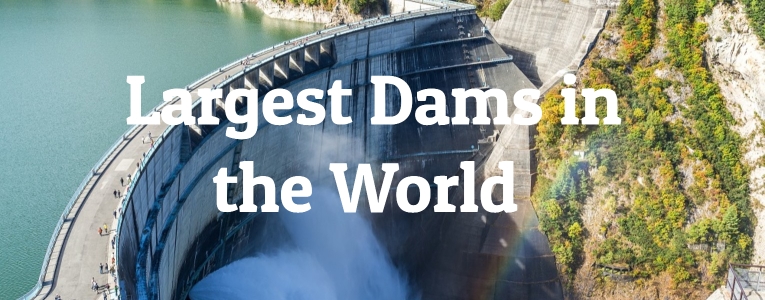
10 Largest Dams in the World
உலகில் 10 மிகப்பெரிய அணை
Gardiner Dam
Reservoir Volume: 9.4 km³ (7,620,700 acre-ft)
Structure Height: 64 m (210 ft)
Structure Length: 5,000 m (16,400 ft)
Type of Dam: Embankmen
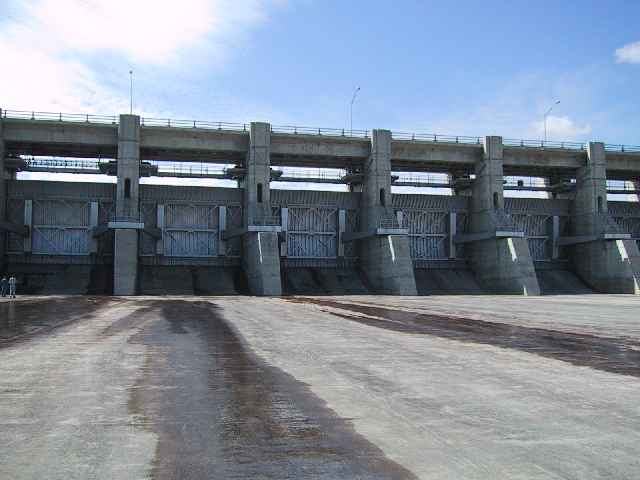
Source: Wikimedia Commons via Wtshymanski
Gardiner Dam is the largest earth filled dam in Canada and one of the largest embankment dams in the world. The dam is located south of Saskatoon on the South Saskatchewan River. Gardiner Dam was completed in 1967 and created Lake Diefenbaker, the dam’s reservoir. Lake Diefenbaker has a capacity of 9.4 cubic kilometers (7,620,700 acre-feet).
The Gardiner Dam’s main purpose is to efficiently utilize the waters of the South Saskatchewan River for irrigation, recreation, urban water supply, and electrical power. Gardiner Dam now provides irrigation to about 100,000 acres (40,468.564 hectares) of land, which allowed new crops to be grown in the region, including pinto beans, peas, and fava beans.
Did You Know?
Gardiner Dam was named for James G. Gardiner, the former premier of Saskatchewan and Lake Diefenbaker was named after former Canadian Prime Minister John G. Diefenbaker, who initiated the plans for the dam.
Nurek Dam
Reservoir Volume: 10.5 km³ (8,512,000 acre-ft)
Structure Height: 300 m (980 ft)
Structure Length: 700 m (2,300 ft)
Type of Dam: Embankment (earth fill)
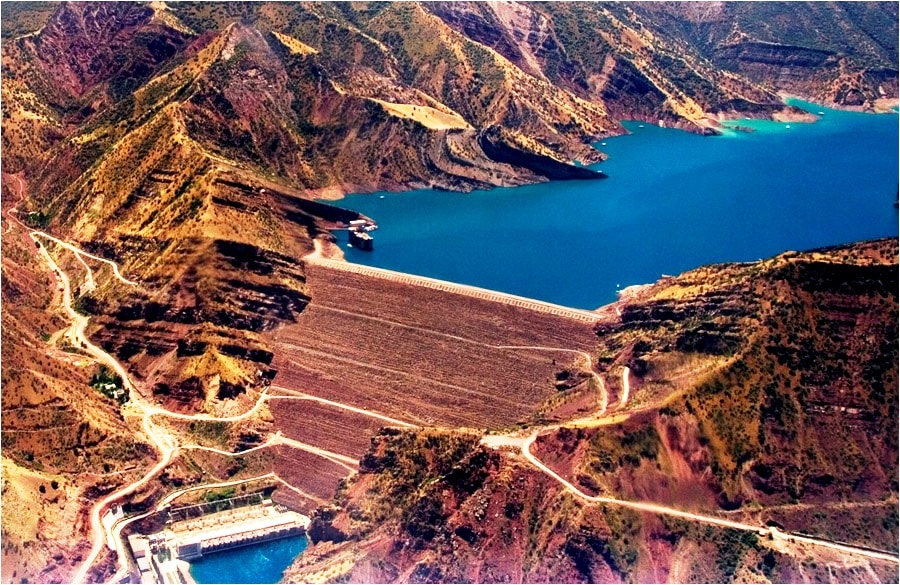
Source: Wikimedia Commons via Troetona
Although the Nurek Dam isn’t quite as large as the other dams on this list it is the tallest dam in the world with a height of 300 meters (980 feet). Nurek Dam is located across the Vakhsh River, which is the largest river in Tajikstan.
Nurek Dam is one of five hydroelectric dams along the Vakhsh River. Of the five hydroelectric dams, Nurek Dam provides the most electricity, about 3,000 MW – this accounts for about 75% of Tajikstan’s electricity needs.
Did You Know?
The Nurek Dam is used to irrigate 1,600,000 acres (650,000 hectares) of farmland in Tajikstan.
Tarbela Dam
Reservoir Volume: 14.3 km³ (11,098,680 acre-ft)
Structure Height: 14.3 km³ (11,098,680 acre-ft)
Structure Length: 2,743.2 m (9,000 ft)
Type of Dam: Embankment (earth fill)
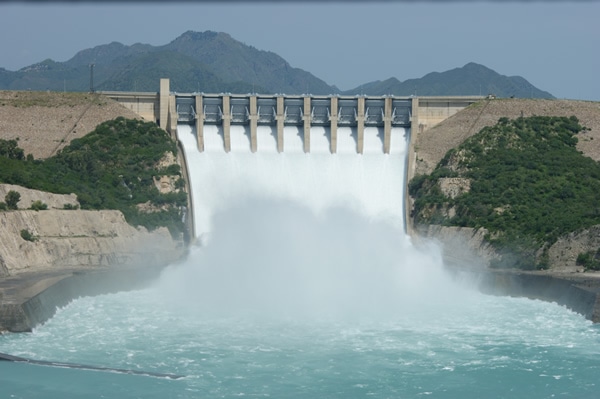
Source: Wikimedia Commons via USAID
Tarbela Dam, which is located in Pakistan, is the largest earth filled dam in the world. The dam created the Tarbela Reservoir, which currently has a capacity of 14.3 cubic kilometers (11,600,000 acre-feet). The Tarbela Dam was built over the Indus River.
Before the dam was built in the late 1960s through the late 1970s, the flow of the Indus River was unpredictable. This caused the agricultural yield in Pakistan to be uneven, especially during the country’s main growing season.
Did You Know?
The Tarbela Dam is currently undergoing its fifth extension, which will increase the dam’s electricity generation capacity by 1,410 MW.
Fort Peck Dam
Reservoir Volume: 22.774 km³ (18,463,000 acre-ft)
Structure Height: 76 m (250 ft)
Structure Length: 6,409 m (21,026 ft)
Type of Dam: Hydraulic earth fill

Source: Wikimedia Commons via Harry Weddington, U.S. Army Corps of Engineers
Fort Peck Dam is another large dam located along the Missouri River in the United States. Fort Peck Dam has been in operation since 1940 and produces an annual average 2.6 million mega-watt hours of electricity. Fort Peck Lake, the reservoir created by the dam, is the fifth largest man-made lake in the United States.
Fort Peck Dam provides much needed water to Montana, which experienced severe droughts before the dam was completed in 1940. Fort Peck Dam also made it easier to navigate the Missouri River and the dam was actually the first dam built in the upper Missouri River Basin.
Did You Know?
Fort Peck Dam was commissioned by President Franklin D. Roosevelt during the Great Depression. The construction of Fort Peck Dam provided jobs to over 50,000 people.
Oahe Dam
Reservoir Volume: 28.539 km³ (23,137,000 acre-ft)
Structure Height: 75 m (245 ft)
Structure Length: 1,100 m (3,500 ft)
Type of Dam: Embankment (rolled earth fill and shale berms)
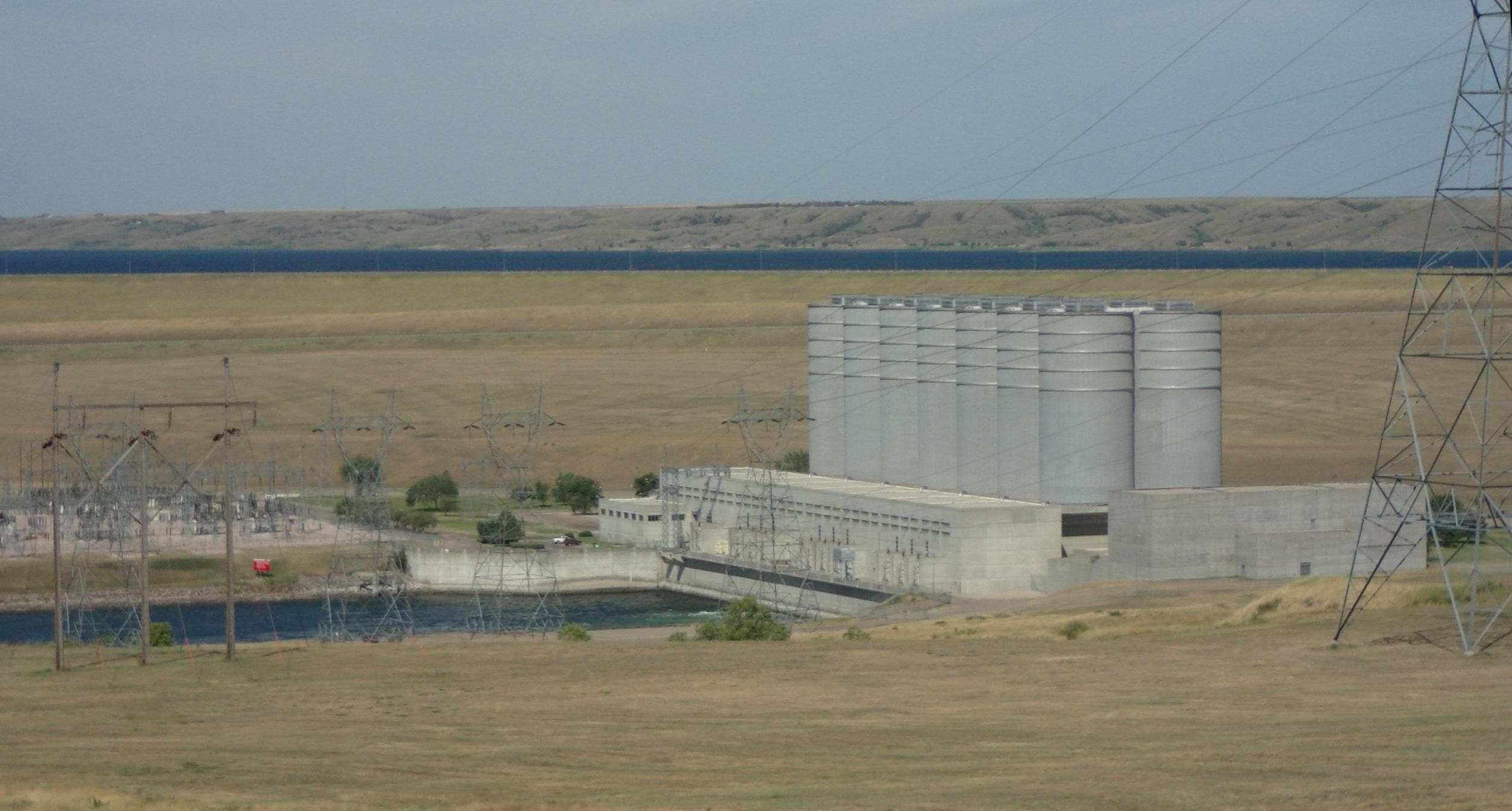
Oahe Dam was built by the U.S. Army Corps of Engineers throughout the late 1940s to late 1950s. The Oahe Dam forms Lake Oahe, which is the fourth largest reservoir in the United States. Lake Oahe has a capacity of 29 cubic kilometers (23,137,000 acre-feet).
The Oahe Dam generates most of the electricity for the north-central United States. The dam and lake were named after the Sioux Indian word Oahe, which means “a foundation” or “place to stand on.”
Did You Know?
Oahe Dam provides enough electricity to power over 259,000 homes annually.
Garrison Dam
Reservoir Volume: 29.383 km³ (23,821,000 acre-ft)
Structure Height: 64 m (210 ft)
Structure Length: 3,444 m (11,300 ft)
Type of Dam: Embankment (rolled earth fill)

Source: Wikimedia Commons via George Stringham
The Garrison Dam is another large dam in the United States and is located on the Missouri River. The reservoir formed by Garrison Dam is called Lake Sakakawea, which has a volume of 29 cubic kilometers (23,821,000 acre-ft). Lake Sakawea is the third largest reservoir in the United States.
Garrison Dam is the fifth largest earthen dam in the world and has a height of 64 meters (210 feet) and a length of 3,444 meters (11,300 feet).
Did You Know?
Although the Garrison Dam is an important source of power and irrigation for the surrounding areas, the building of the dam displaced Native Americans and flooded their farmlands.
Three Gorges Dam
Reservoir Volume: 39.3 km³ (9.43 cu mi)
Structure Height: 181 m (594 ft) )
Structure Length: 2,335 m (7,661 ft)
Type of Dam: Gravity
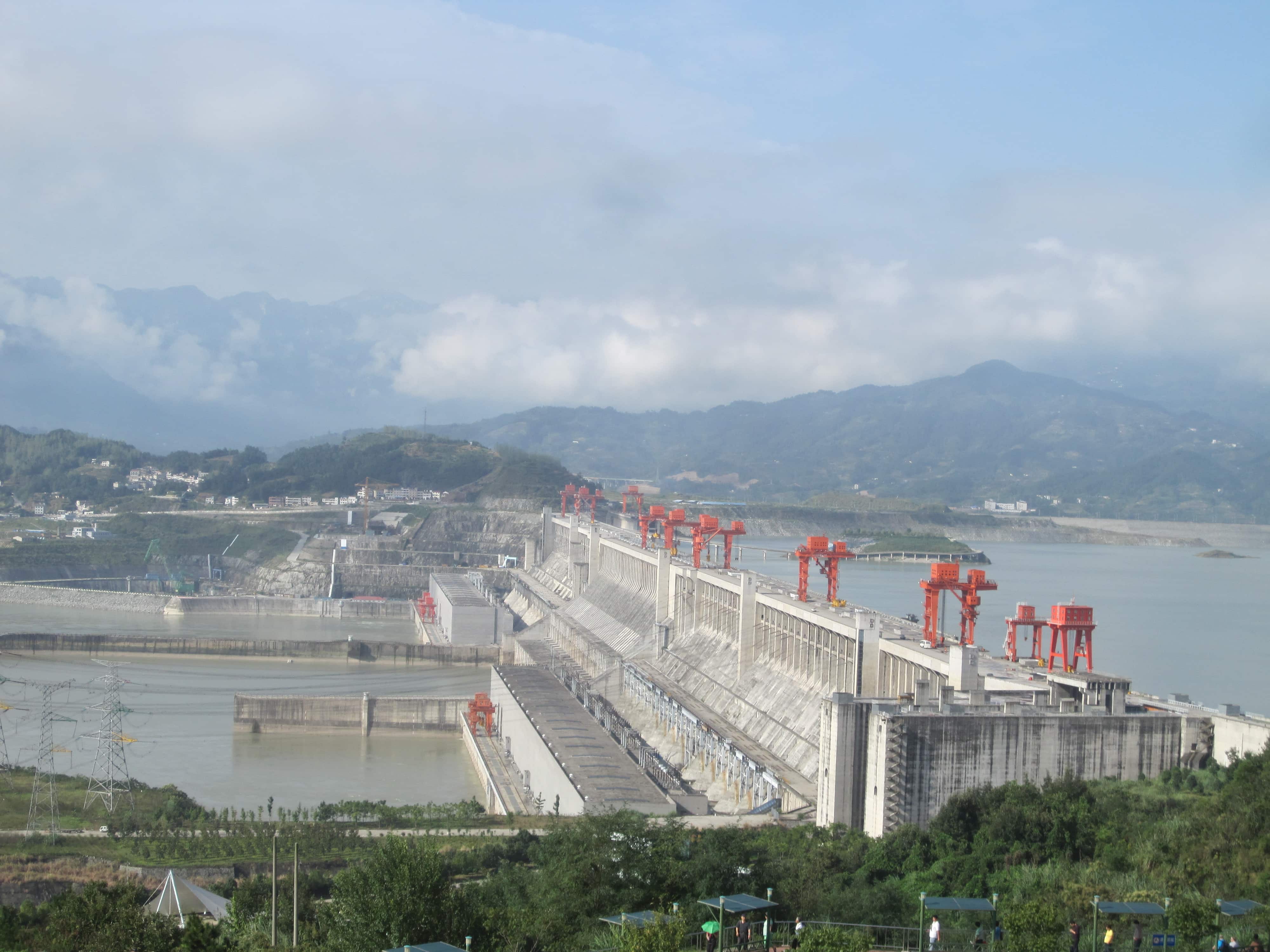
Source: Wikimedia Commons via Le Grand Portage
Overall, the Three Gorges Dam in China is considered the largest dam in the world (but we arranged this list by reservoir volume). Three Gorges Dam is the world’s largest hydroelectric power plant and has a installed capacity of 22,500 MW.
While the Three Gorges Dam may be impressive in both size and power output, it is considered one of the world’s biggest environmental disasters. The building of the Three Gorges Dam has displaced more than 1.2 million people; caused flooding in nearby towns and cities; has polluted the nearby water and land, threatening the local plants and animals; and has increased the seismic activity in the area.
Did You Know?
Three Gorges Dam has shifted around so much water that it has slowed down the Earth’s rotation.
Atatürk Dam
Reservoir Volume: 48.7 km³ (11.68 cu mi)
Structure Height: 169 m (554 ft)
Structure Length: 1,819 m (5,968 ft)
Type of Dam: Embankment

Source: Wikimedia Commons via Alen Ištoković
The Atatürk Dam is located on the Euphrates river in southeast Turkey. Atatürk Dam is the largest of the 22 dams and 19 hydroelectric stations found along the Euphrates and Tigris rivers. The dam’s reservoir has a volume of 48.7 cubic kilometers (11.68 cubic miles). The Atatürk Dam itself is quite large with a height of 169 meters (554 feet) and a length of 1,819 meters (5,968 feet).
The Atatürk Dam is part of Southeastern Anatolia Project (GAP), which is a network of dams, hydroelectric stations, and irrigation canals built in the Euphrates, Tigris, and Upper Mesopotamia basins. The GAP project is expected to be completed in 2020 and will supply water to around 1.8 million hectares of land and also generate about 7,476 MW of power.
Did You Know?
Atatürk Dam was originally called Karababa Dam, but had its name changed to honor the founder of the Turkish Republic, Mustafa Kemal Atatürk.
Aswan High Dam
Reservoir Volume: 132 km³ (31.67 cu mi)
Structure Height: 111 m (364 ft)
Structure Length: 3,830 m (12,570 ft)
Type of Dam: Embankment
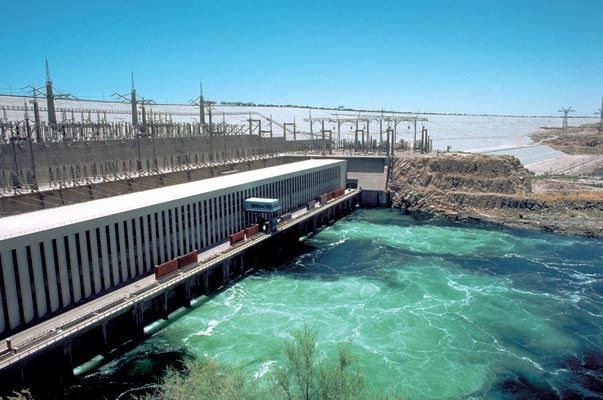
Source: Wikimedia Commons via Orlova-tpe
The Aswan High Dam is located near Aswan, Egypt close to the border of Sudan. The Aswan High Dam lies across the Nile River and its reservoir is called Lake Nasser, which is one of the biggest man-made lakes in the world. Lake Nasser has a capacity of 132 km³ (107,000,000 acre-ft) and the water is used to irrigate the surrounding land in both Egypt and Sudan.
Aswan High Dam was completed in 1970 and since then, the dam has helped to control the annual flooding of the Nile River. Additionally, the Aswan High Dam provides about half of Egypt’s power supply.
Did You Know?
When the Aswan High Dam was built, the ancient temple complex of Abu Simbel, built in the 13th century BCE, had to be relocated.
Guri Dam
Reservoir Volume: 135 km³ (32.39 cu mi)
Structure Height: 162 m (531 ft)
Structure Length: 7,426 m (24,364 ft)
Type of Dam: Gravity/Embankment
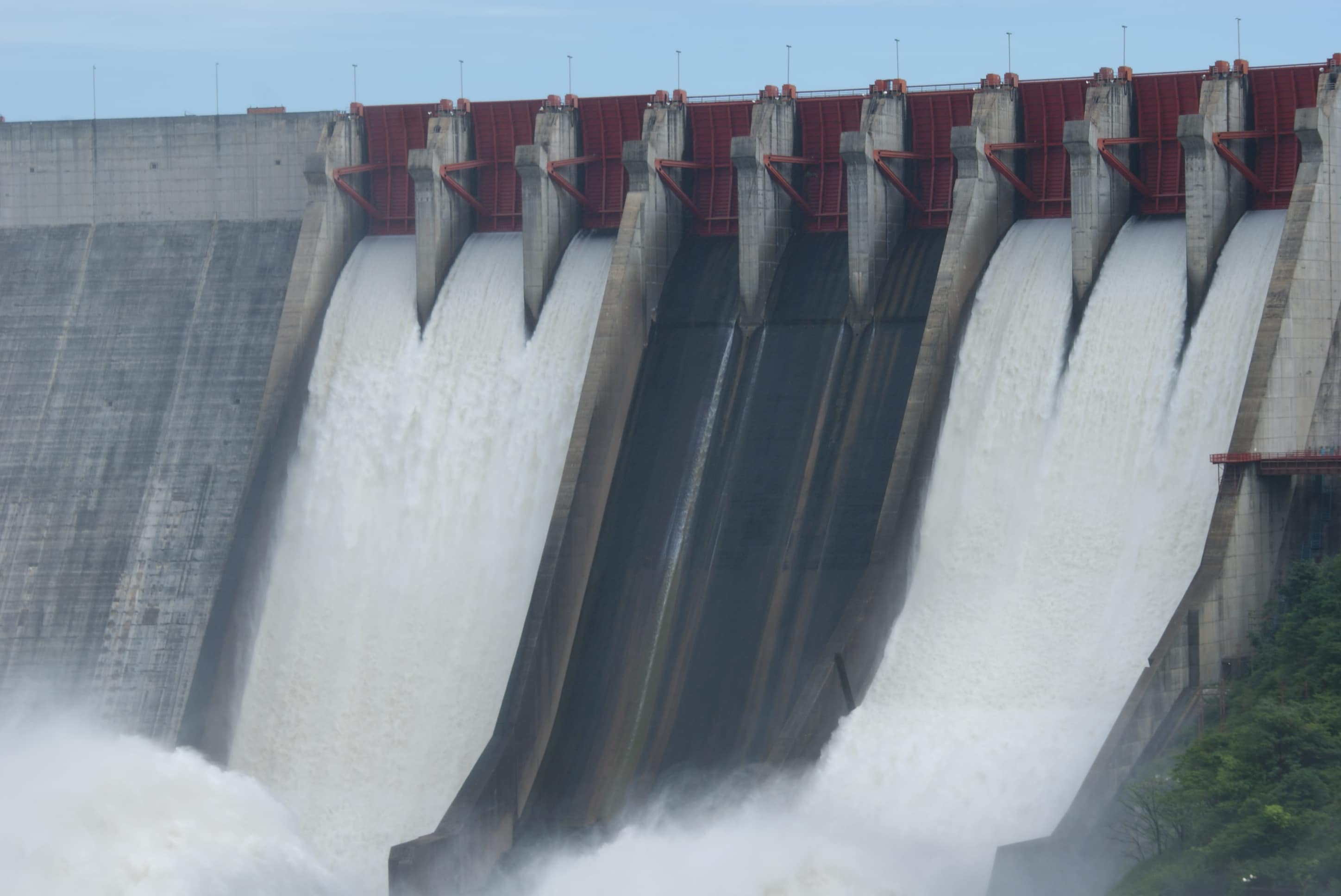
Source: Wikimedia Commons via Tyraelux
Guri Dam in Bolívar, Venezuela is the largest dam in the world based on reservoir volume. The dam’s reservoir can hold up to 135 cubic kilometers (32.39 cu mi) of water. Guri Dam is also one of the world’s tallest dams with a height of 162 m (531 ft).
In addition to holding back the Caroni River, the Guri Dam is also a hydroelectric power plant and the second largest in the world based on installed capacity, which is 10,235 MW. The Guri Dam provides about 73% of Venezuela’s energy needs.


Well done
ReplyDelete